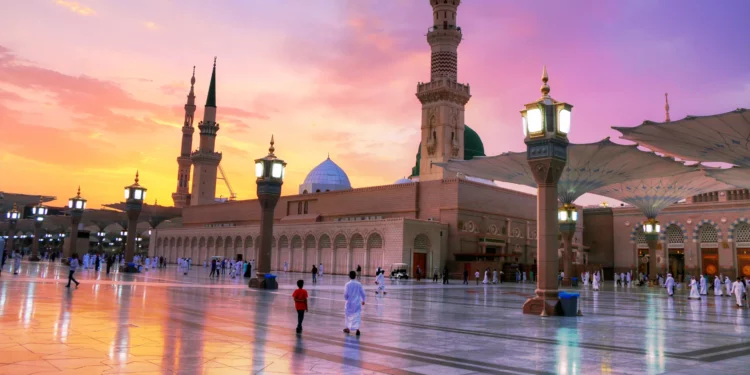Saudi Arabia’s eVisa platform allows travelers from 66 countries to apply for a one-year, multiple-entry permit.
Vision 2030 is one of Saudi Arabia‘s most ambitious construction projects. It aims to reshape its economy and identity as it moves towards an infrastructure, innovation, and sustainability-focused future.
As it is coming to life, inbound tourism spending in Saudi Arabia has reached a record of SR153.61 billion ($40.95 billion) in 2024, representing a 13.82% annual growth, according to data from the Saudi Central Bank.
The increase also pushed the Kingdom’s travel balance surplus to SR49.78 billion, its most immense yearly level up 7.81% from the previous year. Outbound spending by Saudi citizens increased by 16.94% to SR103.84 billion.
The Kingdom received 30 million foreign visitors in 2024, a 9.5% increase. This tourism boost is not a temporary wave but a permanent route to change its economy and reputation abroad.
A recent Ministry of Tourism study indicates that non-religious tourism contributes to most international travel, highlighting a wider appeal and longer stays as tourists explore entertainment and cultural offers.
World Travel and Tourism Council data shows that the Kingdom’s economic impact from tourism in 2024 was SR498 billion from direct and indirect tourism contributions from transport to hospitality.
As part of Vision 2030, Saudi Arabia is rapidly putting foreign investment and tourism at the heart of its future.
Some of the magic powder that the Kingdom made to make it an attractive destination for tourists and investors are streamlined investment law, special economic zones, and 100% foreign ownership in critical industries.
They are slashing billions of dollars on creating culturally rich travel destinations for tourists. These include Diriyah, a historic site south of Riyadh, which will receive 27 million tourists by 2030, and NEOM‘s Trojena, the first outdoor ski resort in the Gulf.
They are trying to draw global attention to cultural icons like Jeddah’s Al-Balad Historic District, which is presently undergoing a significant renovation, and AlUla, which has a 200,000-year history. The list does not end here.
The Kingdom has mega projects like Qiddiya, AMAALA, and Sindalah that offer experiences from world-class entertainment to luxury yachting.
They are upping the game with infrastructure to support the tourism boom. They have more than 426,000 licensed hotel rooms, and brands like Accor, Hilton, and Marriott support these investments.
Travel to Saudi Arabia is painless. Their eVisa platform allows travelers from 66 countries, including the US, UK, Germany, Japan, Australia, and China, to apply for a one-year, multiple-entry permit.
Tourists can stay up to 90 days per visit, which includes visiting friends and relatives, business conferences, summits, and leisure pursuits like Umrah, an Islamic pilgrimage.
Additionally, the Kingdom has a strategic geographic location: 40% of the world’s population can reach Saudi within six hours by air. Its high-end tourism makes it a rapidly growing destination in the global travel landscape.
Religious tourism continues to play a significant role even though Saudi’s tourism industry changes every day, with business and leisure travel making up a large portion of its inbound growth.
Ministry of Tourism reports a clear shift in travel purposes. Religious pilgrimages account for 41% of inbound trips, but non-religious travel is gaining momentum.
The remaining percent is covered by business, educational, and medical travel, with leisure travel accounting for 24% and visits to friends and family for 22%.
According to Tourist Minister Ahmed Al-Khateeb, private sector spending in the Kingdom has increased from SR12 billion to SR14.2 billion.
Foreign investors accounted for almost 40% of that cash, indicating growing international trust in Saudi Arabia’s ambitious tourism plan.
Al-Khateeb emphasized that foreign investors are paying more attention to the Kingdom, especially when other areas see slower or stagnant growth.
He explained that investors see their tourism plans as a long-untapped potential that was largely inaccessible for decades.
By the start of the next decade, Saudi aims to attract $80 billion in private investments to support Crown Prince Mohammed bin Salman‘s Vision 2030 plan to diversify the Kingdom’s economy away from oil.
Although the US and Europe currently have the most foreign investment, Al-Khateeb pointed out that active talks are also taking place with Asian partners, such as China, South Korea, and Malaysia, which are looking for opportunities in real estate, retail, and hospitality.

















